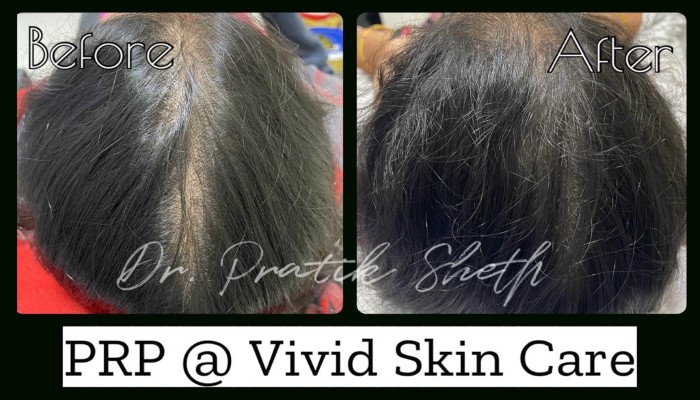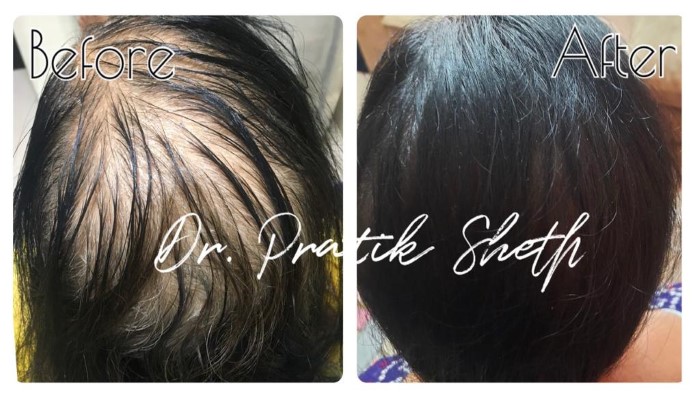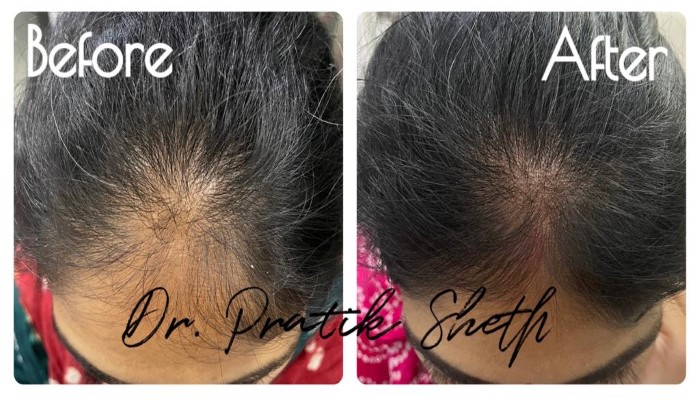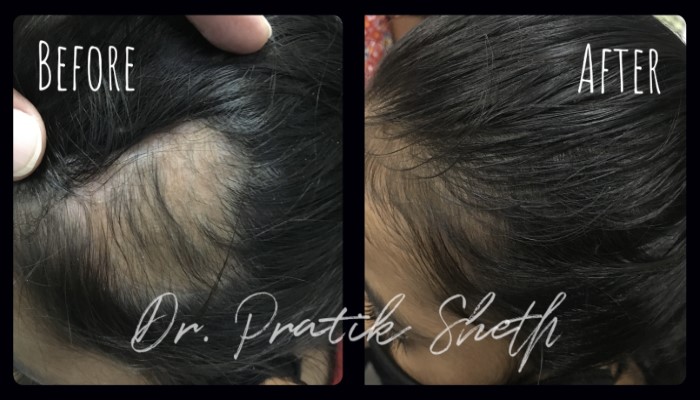The Most common causes of hair loss in females includes:
- Female Patterned Baldness
- Telogen Effluvium
- Alopecia Areata
- Dandruff
Female pattern hair loss or Balding in Women or Hair Thinning in Women is the most common type of hair loss in women.
Each strand of hair sits in a tiny hole in the skin called a follicle.
In general, baldness occurs when the hair follicle shrinks over time, resulting in shorter and finer hair.
Eventually, the follicle does not grow new hair.
The follicles remain alive, which suggests that it is still possible to grow new hair.
The reasons for female pattern baldness is not well understood, but may be related to:
- Aging
- Changes in the levels of androgens (hormones that can stimulate male features)
- Family history of male or female pattern baldness
- Heavy loss of blood during menstrual periods
- Certain hormonal medicines
Hair thinning in Women is different from that of male pattern baldness. The symptoms of female pattern hair loss are:
- Hair thins mainly on the top and crown of the scalp. It usually starts with a widening through the center hair part. This pattern of hair loss is known as Christmas tree pattern.
- The front hairline remains unaffected except for normal recession, which happens to everyone as time passes.
- The hair loss rarely progresses to total or near total baldness, as it may in men.
- If the cause is increased androgens, hair on the head is thinner while hair on the face is coarser.

1. Female pattern baldness is usually diagnosed based on:
- Ruling out other causes of hair loss, such as thyroid disease or iron deficiency.
- The appearance and pattern of hair loss.
- Your medical history.
2. In addition, your dermatologist will examine you for other signs of too much male hormone (androgen), such as:
- Abnormal new hair growth, such as on the face or between the belly button and pubic area
- Changes in menstrual periods and enlargement of the clitoris
- New acne
3. A skin biopsy of the scalp or blood tests may be used to diagnose skin disorders that cause hair loss.
4. Looking at the hair with a dermoscope or under a microscope may be done to check for problems with the structure of the hair shaft itself.
There is no known prevention for female pattern baldness.
Female pattern baldness is usually not a sign of an underlying medical disorder.
Hair loss may affect self-esteem and cause anxiety.
Hair loss is usually permanent.
If left untreated, hair loss in female pattern baldness is permanent. However, in most cases, hair regrowth may be possible if hair loss is mild to moderate.
Treatment options include:
1. For mild to moderate baldness:
- Medical Treatment (Minoxidil, spironolactone, cimetidine, ketoconazole, etc) with or without
- Procedural Treatment (Platelet based Growth Factor Therapy or GFC)
2. For severe baldness:
This procedure can be effective in females who do not respond well to medical treatment.


















